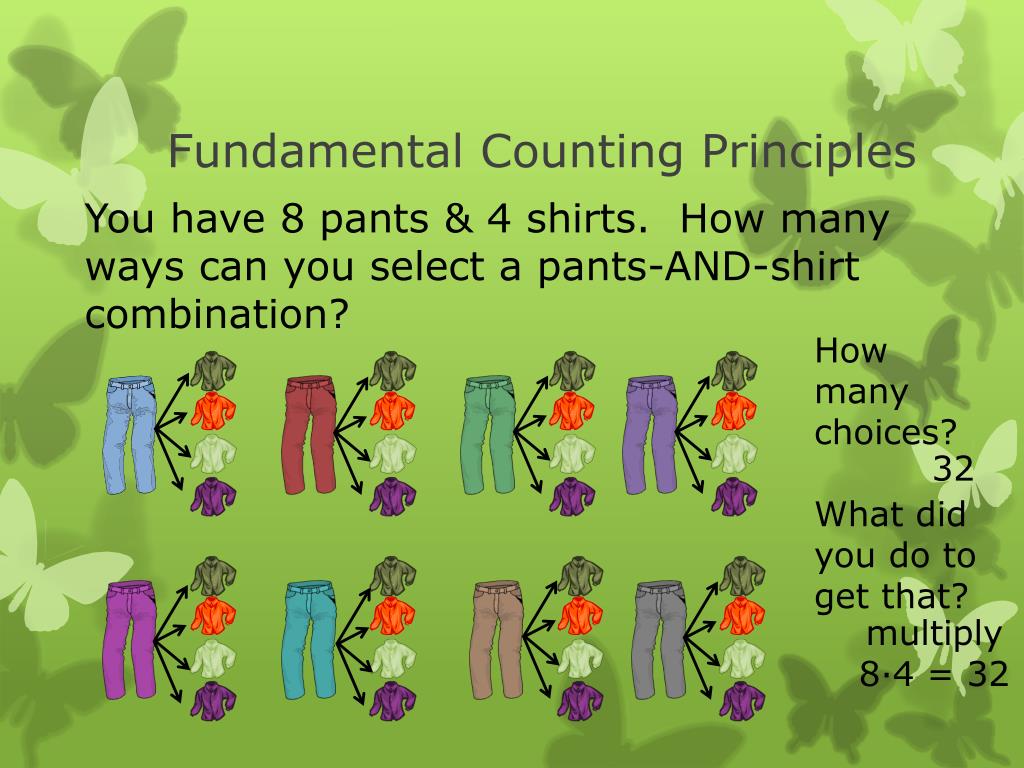

We need to count the number of outcomes from both events. Hence, we can apply the addition rule to obtain our answer if we know the number of outcomes from both events. In this example, the events are “forming a group consisting of 3 boys” and “forming a group consisting of 2 girls.” We note that there cannot be a common outcome of the two events, which tells us that they are mutually exclusive. We recall the addition rule for two events: if two events are mutually exclusive, then the number of distinct outcomes from either of the two events is given by the sum of the numbers of distinct outcomes from the two events. What is the numerical expression that allows us to calculate how many ways there are of forming a group that consists of either 3 boys or 2 girls? With jam, with syrup, with cream.Example 1: Counting Outcomes of Two Events Using the Addition Rule Maybe we could calculate all possible pancake servings? Thick or thin. That's all, folks! The fundamental counting principle calculator really is that simple, so make sure to play around with it and see how many options the world around you offers. If you add new ones, the formula, and result will change accordingly. In total, the fundamental counting principle calculator allows up to ten characteristics for the choice you're making! However, observe that the tool will already begin its calculations when you input two numbers. However, every variant of the first characteristic must have the same number of options for the second (for instance, every car company must have the same number of colors available).Īlthough you first see only two variable fields, more will appear once you begin inputting data.
#Counting principle how to
Check out the dice roller calculator to learn how to estimate the dice roll probability. The things in question can be pizza toppings, the color of a car, the score on dice when you roll it, or anything else of that sort.

When you look at the fundamental counting principle calculator, you'll see two variable fields for the number of choices for the first and second things. Lastly, before we let you go for today, let's see how to use Omni's fundamental counting principle calculator to solve all such problems in the blink of an eye! We can apply to them the same counting rules as in the fundamental counting principle above, as long as for each variant of the first thing, we have the same number of options for the second thing, and so on.
#Counting principle movie
Observe how we can apply the same reasoning to many other life-like problems, e.g., buying a car (the company, the model, the color), choosing a movie for the evening (the platform, the genre), etc. Therefore, if we apply the multiplication principle to our problem, we'll see that we have: Note how it's important each place had the same number of sizes, pizzas, and sauces on offer. In principle, we're choosing:Īccording to the data above, we have 4 choices for the pizza place, 3 possible sizes, 12 different sets of toppings, and 4 sauces to choose from. Let's use the counting rules, i.e., the fundamental counting principle to see how many combinations we have here.

Coincidentally, each restaurant has 12 different pizzas to choose from and 4 side sauces. Suppose that there are 4 pizza places around you, and each offers its products in 3 different sizes. You feel picky, so you decide to browse through all the options you have on offer.


 0 kommentar(er)
0 kommentar(er)
